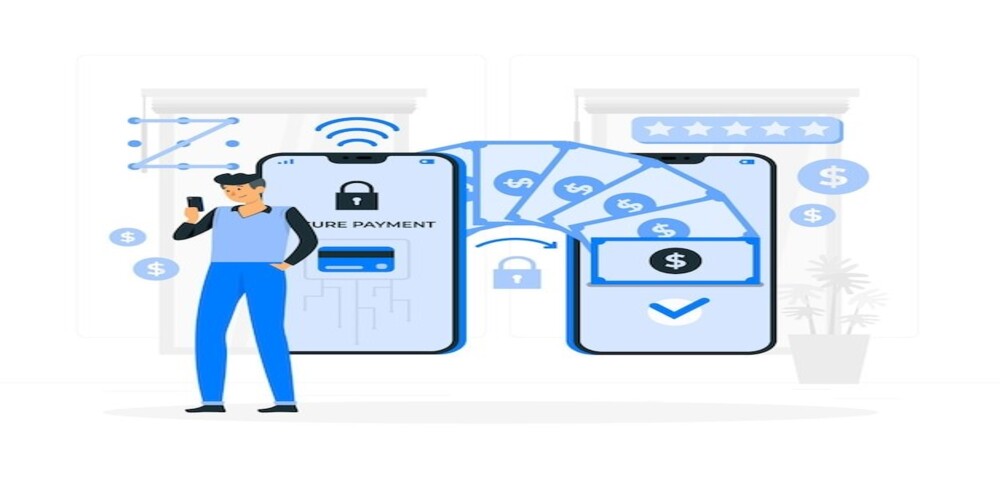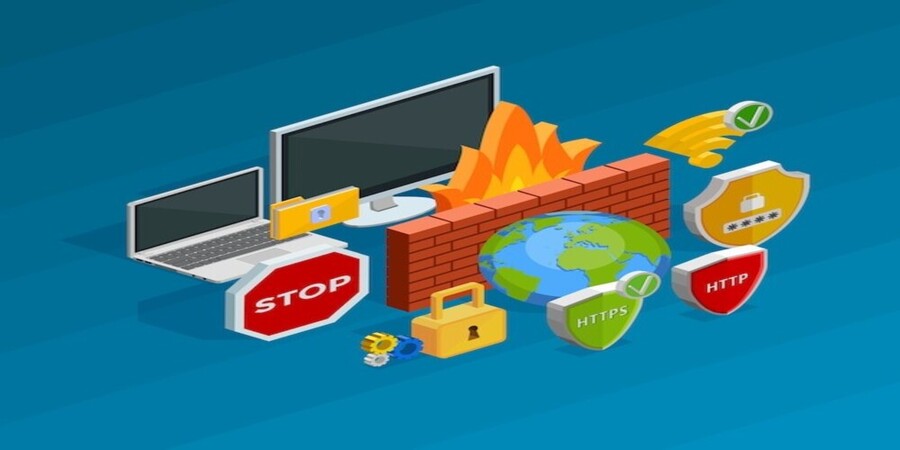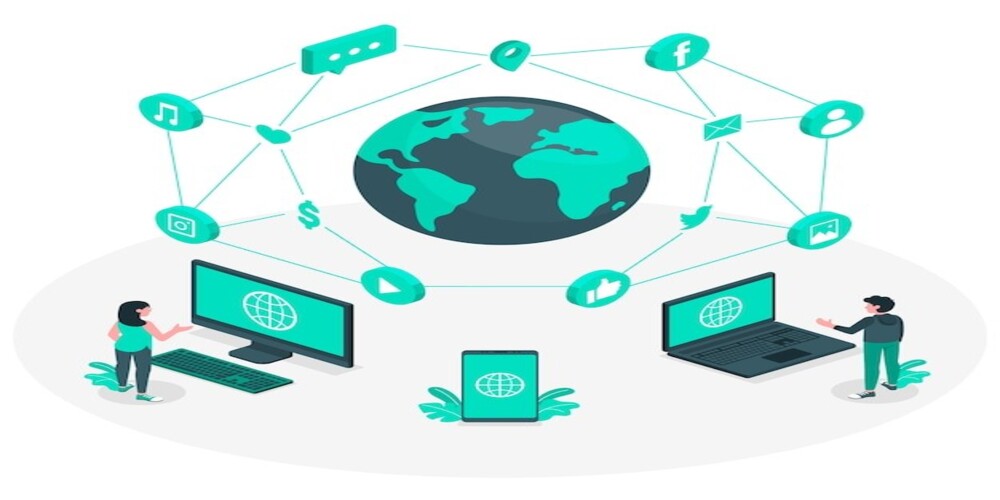
As an ecommerce business owner or website developer, protecting your customers from security threats is paramount. Unfortunately, those threats are ever-evolving and can be difficult to understand – but understanding them is essential in ensuring that customer data remains secure. In this blog post, we’ll discuss the most common types of ecommerce security threats related to ecommerce websites and how best to protect your customers from them. Whether you’re just launching an ecommerce website or have been running one for some time, you must take understanding the Different Types of Ecommerce Security Threats the right steps to ensure everyone using your site feels safe engaging with you online.
Table of Contents
Understanding the Different Types of Ecommerce Security Threats

Keeping e-commerce security up to date and ensuring safe transactions is becoming increasingly important. Many e-commerce security threats can affect individuals, businesses, and organizations. Understanding these threats is crucial for protecting against them. Here are some common types of security threats:
- Malware: Malware is malicious software designed to damage or disrupt computer systems or steal sensitive information. Common types of malware include viruses, trojans, and ransomware.
- Phishing: Phishing is a type of social engineering attack where an attacker tries to trick the victim into providing sensitive information, such as passwords or credit card numbers, through fraudulent emails or websites.
- Distributed Denial of Service (DDoS) attacks: DDoS attacks involve flooding a website or network with traffic to overwhelm it and make it inaccessible to users.
- Insider threats: Insider threats are security threats that come from within an organization, such as employees stealing data or sabotaging systems.
- Advanced Persistent Threats (APTs): APTs are targeted attacks that are designed to gain access to sensitive information over an extended period of time, often using a combination of techniques like malware and social engineering.
- Man-in-the-middle (MITM) attacks: MITM attacks involve intercepting and altering communications between two parties, allowing an attacker to steal sensitive information.
- Zero-day exploits: Zero-day exploits are vulnerabilities in software that are not yet known to the software vendor or antivirus software. Attackers can use these vulnerabilities to gain access to systems before they are patched.
- Physical security breaches: Physical security breaches involve unauthorized access to physical locations, such as data centers or offices, where sensitive information is stored.
By understanding these different types of security threats, individuals and organizations can better prepare and protect themselves from potential attacks.
Setting Up a Secure Payment System

Setting up a secure payment system is essential for ecommerce security. Here are some important steps to take when setting up a secure payment system:
- Choose a secure payment gateway: A payment gateway is a software application that connects your e-commerce website to the payment processing network. It’s essential to choose a payment gateway that is reliable and secure, with features such as fraud detection and prevention, data encryption, and PCI compliance.
- Use tokenization and encryption: Tokenization and encryption are essential for protecting sensitive data, such as credit card numbers, during payment processing. Tokenization replaces sensitive data with a random token, while encryption converts data into a code that can only be decrypted with a key.
- Implement two-factor authentication: Two-factor authentication adds an extra layer of security to the payment process by requiring users to provide two forms of identification, such as a password and a code sent to their mobile phone.
- Use SSL/TLS encryption: SSL (Secure Sockets Layer) or TLS (Transport Layer Security) encryption is essential for securing online transactions and protecting customer data during transmission. Make sure your website uses HTTPS and SSL/TLS encryption to protect against man-in-the-middle attacks and other e-commerce security threats.
- Regularly monitor and update your payment system: Regularly monitoring your payment system for unusual activity or signs of potential e-commerce security threats can help you detect and prevent security breaches. It’s also essential to keep your payment system up-to-date with the latest security patches and software updates.
By following these steps and implementing best practices for ecommerce security, you can set up a secure payment system that protects your customers’ sensitive information and gives them peace of mind when making online purchases.
Implementing Strong Firewalls and Encryptions Protocols

Implementing strong firewalls and encryption protocols is essential for ecommerce security. Here are some important steps to take when implementing firewalls and encryption protocols:
- Install a robust firewall: A firewall is a software or hardware system that monitors and controls incoming and outgoing network traffic. Install a robust firewall to protect against unauthorized access, malware, and other e-commerce security threats.
- Use encryption to protect data: Encryption is the process of converting data into a code to prevent unauthorized access. Use encryption protocols such as AES, SSL/TLS, and IPsec to protect customer data during transmission and storage.
- Implement two-factor authentication: Two-factor authentication adds an extra layer of security to your e-commerce website by requiring users to provide two forms of identification: a password and a code sent to their mobile phone.
- Regularly update software and security patches: Keep your software and security patches up-to-date to protect against new ecommerce security threats. Regularly updating your software and security patches can also help to prevent vulnerabilities that attackers could exploit.
- Implement strong password policies: Use strong password policies that require users to create strong, unique passwords and change them regularly. This can help prevent attackers from gaining access to your ecommerce website through weak passwords.
- Train employees on e-commerce security best practices: Educate your employees on e-commerce security best practices, such as recognizing phishing emails, not sharing passwords, and keeping software up-to-date. Employees are often the weakest link in ecommerce security, so training them on best practices is essential.
By implementing strong firewalls and encryption protocols, you can help protect your e-commerce website and customer data from ecommerce security threats. Regularly updating software and security patches, implementing strong password policies, and training employees on best practices can also help to prevent security breaches.
Frequently Monitoring Your Systems and Network for Vulnerabilities

Monitoring your systems and network for vulnerabilities is an important aspect of e-commerce security. Here are some important steps to take when monitoring your systems and network for vulnerabilities:
- Conduct regular vulnerability assessments: Regular vulnerability assessments can help identify potential security vulnerabilities in your systems and network. Conducting assessments at regular intervals, such as quarterly or annually, can help you identify and address vulnerabilities before attackers can exploit them.
- Implement intrusion detection and prevention systems: Intrusion detection and prevention systems (IDS/IPS) can help identify and block potential e-commerce security threats, such as malware or unauthorized access attempts. Implementing IDS/IPS can help protect your ecommerce website and customer data from attackers.
- Monitor your logs and alerts: Monitoring your logs and alerts can help you identify suspicious activity on your systems and network. Log monitoring can help identify potential e-commerce security threats, such as unauthorized access attempts or suspicious network activity.
- Stay up-to-date with e-commerce security threats: Staying up-to-date with the latest e-commerce security threats can help you identify potential vulnerabilities in your systems and network. Keep abreast of the latest threats by reading security blogs and attending industry events.
- Regularly patch and update your systems: Regularly patching and updating your systems can help prevent known vulnerabilities from being exploited by attackers. Make sure you stay up-to-date with the latest software and security patches to protect your ecommerce website and customer data.
By frequently monitoring your systems and network for vulnerabilities, you can help identify and address potential ecommerce security threats before attackers can exploit them. Implementing intrusion detection and prevention systems, monitoring your logs and alerts, staying up-to-date with the latest threats, and regularly patching and updating your systems are all important steps to take to protect your e-commerce website and customer data.
Training Staff on How to Recognize Suspicious Activity

Training staff on how to recognize suspicious activity is a critical aspect of ecommerce security. Here are some important steps to take when training your staff on e-commerce security:
- Identify potential security risks: Potential ecommerce security risks, such as phishing scams, malware, and social engineering attacks. Help your staff understand how these attacks work and the potential consequences of a successful attack.
- Train staff on security best practices: Train your staff on ecommerce security best practices, such as not sharing passwords, using two-factor authentication, and avoiding suspicious links or email attachments. Educate them on the importance of strong passwords, and encourage them to use unique passwords for each account they use.
- Provide ongoing training: Provide ecommerce security training for your staff, as the threat landscape constantly evolves. Schedule regular training sessions, provide updated training materials, and keep staff informed of any new security threats or policies.
- Encourage reporting of suspicious activity: Encourage your staff to report any suspicious activity they observe. Provide a clear reporting process and make it easy for staff to report potential security incidents without fear of retribution.
- Conduct regular phishing simulations: Phishing scams are a common form of ecommerce security threat. Conduct regular phishing simulations to help your staff recognize and avoid these scams. Use these simulations as an opportunity to reinforce e-commerce security best practices.
By training staff on how to recognize suspicious activity, you can help prevent ecommerce security threats and protect your business and customers. Identify potential risks, train staff on security best practices, provide ongoing training, encourage reporting of suspicious activity, and conduct regular phishing simulations. These steps can help keep your staff vigilant and prepared to respond to potential e-commerce security threats.
Using Multi-Factor Authentication for Each Account

Using multi-factor authentication (MFA) for each account is an effective way to improve e-commerce security. Here are some important steps to take when implementing MFA for each account:
- Enable MFA for all accounts: Enable MFA for all e-commerce accounts, including administrator accounts, customer accounts, and third-party accounts. MFA can help prevent unauthorized access to these accounts, even if a password is compromised.
- Choose a strong authentication method: Choose a strong authentication method, such as biometric authentication, token-based authentication, or one-time passwords. Consider the security and convenience of each method when choosing the best authentication method for each account.
- Educate users on MFA: Educate e-commerce users on the benefits of MFA and how to use it. Please encourage them to use MFA for all their e-commerce accounts, and provide clear instructions on enabling and using it.
- Implement MFA across all devices: Implement MFA across all devices used to access e-commerce accounts, including computers, mobile devices, and other connected devices. This can help prevent unauthorized access, even if a device is lost or stolen.
- Regularly review MFA settings: Regularly review MFA settings to ensure that they are up-to-date and effective. Encourage users to update their MFA settings periodically, and provide instructions on how to do so.
Implementing MFA for each e-commerce account can help prevent unauthorized access and improve e-commerce security. Enable MFA for all accounts, choose a strong authentication method, educate users on MFA, implement MFA across all devices, and regularly review MFA settings. These steps can help protect your business and customers from e-commerce security threats.
In Conclusion
Strong security protocols are essential for any organization in the face of rapidly evolving cyber threats. The information provided in this post serves as a good starting point for fortifying existing security systems and avoiding potential disasters. Staying up-to-date on new trends and best practices is important to provide an added protection layer tailored to any given environment or business sector. Having a comprehensive plan for identifying, preventing, and responding to modern security threats should be at the top of every organization’s priority list. With proper measures in place, businesses can confidently combat malicious attempts on their data while simultaneously reaping the rewards from greater productivity and improved customer experiences.
FAQs.
1. What are some common ecommerce security threats?
Some common ecommerce security threats include phishing attacks, data breaches, and website hacking.
2. How can I keep my customers’ sensitive information safe?
You can keep your customers’ sensitive information safe by using SSL encryption, regularly updating your software and security measures, and educating your customers on how to protect their information.
3. How can I educate my customers on protecting their information?
You can educate your customers on protecting their information by providing them with clear instructions on creating strong passwords, avoiding suspicious emails and links, and using trusted payment methods.
